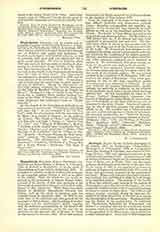

Diepenbeeck, ABRAHAM VAN, an erudite and accomplished painter of the Flemish School, b. at Boisle-Duc in the Netherlands, 1599; d. at Antwerp, 1675. After having received a classical education he became one of Ruben‘s best pupils and assistants. He handled mythological and historical subjects, as well as portraits, with great skill and vigour and was a good, sound colorist. He went to Antwerp about 1629 and made his first successes in painting on glass, among his productions being windows in the cathedral there representing the “Acts of Mercy”. Similar work at the church of the Dominicans shows scenes from the “Life of Saint Paul”. Van Diepenbeeck was admitted to the guild of painters in 1638, and became director of the academy in 1641. It was after a visit to Italy that the artist began to paint chiefly in oil and to illustrate. Among his illustrations are fifty-eight designs engraved by Cornelis Bloemaert for the Abbe de Marolles’ “Tableaux du Temple des Muses”. During the reign of Charles I, van Diepenbeeck was in England where, besides painting portraits of the Duke of Newcastle and his family, the artist illustrated that nobleman’s book on “Horsemanship”.
At the church of the Carmelites in Antwerp is one of the painter’s masterworks, “The Virgin in the Clouds with Saint Ely”. In the cathedral is his “St. Norbert”, while the saint appears with the first Abbot of St. Michel in a church at Deurne. In the galleries are: Louvre, “The Flight of Cloelia” and “Portraits of a Man and a Woman“; Vienna, a “Descent from the Cross” and “Allegory of Mortality”; Munich, “Abraham and the Angels” and “Feeding the Poor”; Dresden, “Neptune and Amphitrite”; Berlin, “The Marriage of St. Catherine” and the “Flight of Clcelia”; Brussels, “St. Francis Adoring the Holy Sacrament”; Antwerp, “The Ecstasy of St. Bonaventure”; Brunswick, “The Entombment” and “Children’s Bacchanal”; Frankfort, “Portraits of a Young Man and a Young Woman“; Bordeaux, “The Rape of Ganymede”.
AUGUSTUS VAN CLEEF

